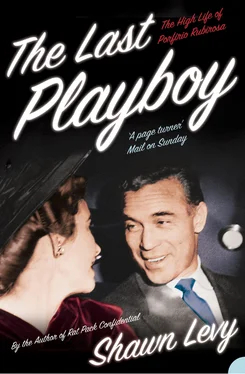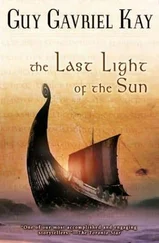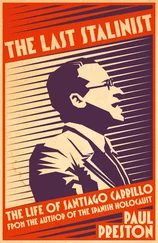Rifle fire; early morning; a child springs up in bed. “At most,” he remembered later, “I was three years old.”
Not long after, in the dead of another night, the child startles awake once again, panicked to find himself alone. “I was in the habit of sleeping with a cat.” He leaves his bed to seek his feline bedmate, and is shocked to find strangers everywhere. “The house was filled with armed men asleep in the hallways.”
And maybe a year later still, a mounted rider approaches. “Without getting off his horse, he took me in his great big hands and pulled me up to its neck, in front of him. One click of his tongue, and we were off! ‘Careful Pedro, careful! He’s so little!’ shouted my mother. My father laughed. The night was gentle and sweet. I had the horse’s mane gripped in my hands. I heard his hard breathing. I wished the corral would never end.”
Gunshots; soldiers; a strongman; a horse; a shouting woman; the thrill of speed; the danger; the Cibao Valley of the Dominican Republic in its Wild West phase, circa 1913: the earliest flashes of memory in the mind of Porfirio Rubirosa.
In the early twentieth century, when a little boy was being imprinted by these memories, the Dominican Republic was, as it had been for centuries prior, a place where fortunes might be made and dominions might be established—but only after painful struggles that were not always won by the most honorable combatant. It was a place that tended to favor unfavorable outcomes. Indeed, despite the noble charge and historic pedigree of the first white men who stumbled on it, the first European to settle the island and live out his days there was, in all likelihood, a rat.
Just after midnight on Christmas Day, 1492, a Spanish caravel gently foundered onto a coral reef beside the large island that its passengers had dubbed Española —Hispaniola in English—the sixth landmass it had encountered in the dozen weeks since departing the Canary Islands.
By dawn, the ship had broken up and sunk.
At that moment, Christopher Columbus had a complete fiasco on his hands.
A nondescript Genoese merchant sailor who made his home in Portugal, Columbus had sufficiently gulled the queen of Spain with his outlandish theories about a sea route to Asia that she arranged a backdoor loan for his enterprise from her husband’s treasury. Isabella invested enough in his pipe dream for Columbus to acquire supplies, a crew, and three ships—the largest of which, the Santa María , had just become the first in several centuries of fabled Caribbean wrecks.
Gold Columbus reckoned he would find, and jewels and spices and a path to the riches of the other side of the world that would make trade with the hostile Moors unnecessary. But to date, he had gleaned significantly less than his own weight in treasure, and with the Santa María sunk, he was down to two ships for the trip home.
So he formed a landing party (which included at least one stowaway rat, whose bones—distinct from those of native species—would be discovered by archeologists centuries later), and he went ashore. There he shook hands with the leader of the native Tainos, accepted a few gifts, and founded a colony, named La Navidad in honor of its Christmas Day discovery. He looked around for a mountain of gold and, seeing none, packed up the Niña and Pinta and went home.
Ten months later, having raised enough capital to fund a fleet of seventeen ships, he returned, intent on exploiting the fonts of gold he believed the island nestled. In January 1494, he founded a second settlement, named La Isabela for his patroness, and used it as a base from which to explore the interior of the island.
Specifically, Columbus was curious about the Cibao, a highland valley that meandered eastward along a river from the northern coast through two mountain ranges and met the sea again in swamplands in the east. On his previous trip, he’d been told that the valley was home to fields where chunks of gold as large as a man’s head lay about just waiting to be gathered. He forayed inland and found the valley—he labeled it La Vega, “the open plain”—but there was no gold. He was nevertheless impressed: The soil was rich, the climate mild, the river navigable, the mountain ranges, particularly to the south, formidable. If he had been a settler and not a buccaneer, he might have colonized the place for ranching and farming. But his priority was raw wealth. He moved on.
Columbus would make two more trips to Hispaniola, still looking for gold, still luckless. He and his men would found the city of Santo Domingo on the southern coast, a deep harbor from which Spain would rule the Caribbean and the Americas. In the coming centuries, the island, genocidally cleansed of natives, would be a keystone of the Spanish slave trade and an important colony of plantations. The Cibao would yield real wealth—fortunes based in coffee, cattle, sugarcane, tobacco—but nobody would ever again venture there in search of treasure.
Indeed, those who did choose to settle there were often lucky just to keep their heads. For hundreds of years after Columbus, the island, despite its import as a staging ground, would be overrun by a continual string of colonial and civil wars and the never-ending scourges of disease, poverty, rapine, and neglect.
Hispaniola fell into ruin in large part because it was, uniquely, colonized by two European powers. The Spanish contented themselves with dominating the eastern side until the French established a foothold in the west in the mid-seventeenth century. The island, long neglected by Spain in favor of colonies that yielded more in the way of obvious riches, suddenly seemed a valuable commodity, a point of contention. Back and forth forces of the two rivals fought, trying bootlessly to vanquish one another until the island was split by treaty in 1697 into two nations: Haiti and Santo Domingo. The plantations of Haiti, under French guidance, prospered, while Santo Domingo lapsed into a tropical torpor more typical of Spanish rule: Slaves bought their freedom and married with Europeans; infrastructure, never the strong suit of Spanish colonialism, was neglected; the economy declined into stagnation. When the Haitian slave rebellion led by Toussaint L’Ouverture spilled eastward over the border in 1801, there was little resistance. Under a rampage of murder, rape, and butchery, Santo Domingo simply fell into French hands for twenty bloody years.
Then a hero arose: Juan Pablo Duarte, a homegrown nationalist who sought freedom not only from the Haitians but from Spain. Starting as a governor of the Cibao, he routed the Haitians and the Spanish, but he failed to bring true unity to the nation. From the expulsion of the Haitian forces in 1844 through the expulsion of the Spanish in 1865 and onward toward the new century, the Dominican Republic, as it had been renamed, was ruled by chaos. Presidents came and went in brief, nasty succession; unrest and poverty were epidemic; and a species of tribal warfare ground on. There were puppet heads of state, bloodthirsty chieftains, coups and battles and massacres and ambushes and ceaseless conflicts. It seemed the destiny of the country always to roil.
Into this quagmire, in San Francisco de Macorís, a small city of the swampy eastern portion of the Cibao, Pedro Maria Rubirosa was born in 1878. The Rubirosas were an educated family, with a tradition of public service. But in this wild era, public service meant choosing a side in the never-ending civil wars. Although he was well schooled, by the time he was in his teens, Pedrito Rubirosa was riding with bands of soldiers. And by the time he was in his twenties, he was leading them.
Half a century later, his son regarded a tintype of his father from these days: “In the photograph in my hands, my father already shines like an adult. With his strong cheekbones, his powerful head, his thick moustache, his gaze falls arrogantly from a height of five-foot-ten. He doesn’t seem at all an adolescent: he is a man by deed and right. They called him Don Pedro.”
Читать дальше












